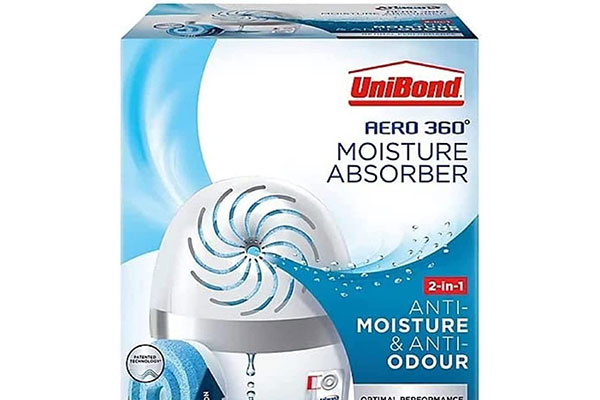1) ThermoPro TP55
The ThermoPro TP55 is a useful and affordable indoor thermometer and humidity monitor. It is consistent in its manufacturing and easy to read, with a large display and responsive touch screen. The back-light is handy for low-light conditions, and the magnet plate is strong enough to keep it in place on surfaces like a fan. While the device may not be a scientific instrument, it is adequate for domestic use and useful for monitoring and avoiding damp conditions.
Pros & Cons
Pros
✅ Accurate temperature and humidity readings
✅ Easy to read display
✅ Backlight for low light conditions
✅ Refreshes readings quickly
✅ Magnetic plate for easy installation
✅ Long lasting batteries
Cons
❌ More expensive than other devices

ThermoPro TP55 Features
- Temperature measurement: -50°C to 70°C (°C or °F)
- Humidity measurement: 10% to 99%
- Readings update efery 10 seconds
- High accuracy 2~3%RH and ±1°F/±0.5°C
- Dimensions: 7.9 x 2.13 x 6.65 cm
- Weight: 145 Grams
- Powered by AAA batteries
2) ThermoPro TP50
The ThermoPro TP50 Digital Thermo-Hygrometer Indoor Room Thermometer is a useful and cost-effective device that provides accurate readings of temperature and humidity levels. It is particularly helpful for people who are concerned about dampness, mold, or controlling the climate in their homes or workplaces. The device responds quickly to changes in the environment and has received positive reviews for its accuracy and ease of use. Some users have recommended using it in conjunction with a dehumidifier to control dampness over the winter. Overall, the ThermoPro TP50 is a valuable tool for anyone who wants to monitor and improve the climate of their living or working space.
Pros & Cons
Pros
✅ Accurate and quick readings
✅ Easy to read large display
✅ Good value for money
✅ Big digits
Cons
❌ No backlight on the display
❌ Reports of display problems after prolonged use

ThermoPro TP50 Features
- Temperature measurement: -50°C to 70°C (°C or °F)
- Humidity measurement: 10% to 99%
- Readings update efery 10 seconds
- High accuracy 2~3%RH and ±1°F
- Dimensions: 7.9 x 2.13 x 6.65 cm
- Weight: 77.11 Grams
- Powered by AAA battery
3) NOKLEAD
NOKLEAD Hygrometer Indoor Thermometer is a basic but useful device for monitoring temperature and humidity levels in a room. It can help prevent problems such as mold and provide information on when to ventilate a home to maintain good air quality. While the device may not be very accurate, it is still helpful for basic monitoring purposes, and the magnet plate for easy installation is a nice touch. Some users noted that the device could be improved with additional features such as a back light or a night light/glow in the dark function. Overall, the NOKLEAD Hygrometer Indoor Thermometer is a handy tool for anyone looking to monitor their indoor environment and maintain healthy living conditions.
Pros & Cons
Pros
✅ Good for basic air monitoring
✅ Magnetic plate for easy installation
✅ Easy to read
✅ Good value for money
✅ Great for space saving (small size)
Cons
❌ No backlight on the display
❌ Migt be too small to read for some people

NOKLEAD Features
- 3-Level Air Comfort Indicator
- Temperature measurement: -9.9℃ ~ 60℃ (°C or °F)
- Humidity measurement: 10% to 95%
- Readings update efery 10 seconds
- The temp accuracy range around ± 1℃ while humidity accuracy is ±3%RH
- Smart Design with 3 Mounting
- Dimensions: 7 x 1.4 x 7 cm
- Weight: 80 Grams
- Powered 2 Lithium Metal batteries
4) AcuRite
It appears to be a reliable and accurate device for measuring temperature and humidity. The device has good speed and accuracy and display is easy to read, even from across the room. The inclusion of magnets on the back of the device is also a nice feature. The only areas for improvement are the display’s resolution and the lack of information in the manual about battery life.
Pros & Cons
Pros
✅ Accurate and consistent readings
✅ Fast response time
✅ Strong magnets for secure attachment
✅ Clear and easy to read display
✅ Well-balanced and sturdy design
✅ Comprehensive and well-presented manual
Cons
❌ Slightly bulky design may not be aesthetically pleasing to all users
❌ Pricey

AcuRite Features
- Readings update efery 10 seconds
- The temp accuracy range around +/- .5 °F while humidity accuracy is ±2%RH
- Smart Design with Magnetic Mounting
- Dimensions: 2.24 x 6.35 x 7.62 cm
5) Govee
The device has an easy-to-read display that shows temperature and humidity readings with minimum and maximum values. It also gives an indication of whether the air is too wet or not. The device can be linked to a smartphone app, but some users find this feature to be of limited value. The Govee can be connected to a home automation system, and some users have reported minor issues with occasional erroneous readings. It may have some issues with data logging and syncing historical data, and may require calibration adjustments. It cannot be monitored remotely, but it is compatible with Home Assistant server and has the ability to export graphs of temperature and humidity readings. However, overall, users find the device to be a great value for the price, and it is recommended for tracking temperature and humidity in various settings.
Pros & Cons
Pros
✅ Easy-to-read display
✅ Can be linked to a smartphone app
✅ Compatible with Home Assistant server
✅ Lightweight and has the ability to export data
✅ Large screen
✅ Good battery usage
Cons
❌ Occasionally records very high or very low readings
❌ Lower humidity accuracy
❌ No backlight on the display

Govee Features
- Readings update efery 2 seconds
- The temp accuracy range around +/- .54 °F while humidity accuracy is ±3%RH
- Up to 60m Bluetooth remote range
- Dimensions: 10 x 7 x 3 cm
- Weight: 107g
Is analog hygrometer worth it?
Non-digital hygrometers, also known as analog or mechanical hygrometers, use a hair or metal coil to measure the humidity in the air. They are often more affordable than digital hygrometers (although the difference is minimal) and can be used without electricity. Some people find them more aesthetically pleasing and easier to read than digital hygrometers.
On the other hand, digital hygrometers use electronic sensors to measure the humidity level and typically provide a more accurate and precise reading than analog hygrometers. They are also more convenient for some applications, as they often come with additional features such as temperature readings, memory functions, and alarm settings.
Lirches – analog hygrometer

Lirches Features
- Wall mount
- Dimensions: 10 x 10 x 2.4 centimetres
- Measuring Range: 10 and 50°C, and humidity is 1-99% RH
- Updates every 10 seconds
Pros
✅ Simple to use
✅ Lightweight
✅ Attractive design
✅ Does not require a battery
Cons
❌ Might be a bit too small
❌ Humidity reading could be larger
❌ Reports of inaccurate readings
❌ Limited functionality
Conclusion – Do I need hygrometer?
Overall, hygrometers are a good tool to use for anyone who wants to monitor and control humidity levels in their environment. They provide important information that can help prevent potential health risks, structural damage, and other negative effects caused by extreme humidity levels. By regularly using a hygrometer, individuals can adjust their environment to maintain a comfortable and healthy living or working space.
Last update on 2025-02-28 / Affiliate links / Images from Amazon Product Advertising API







